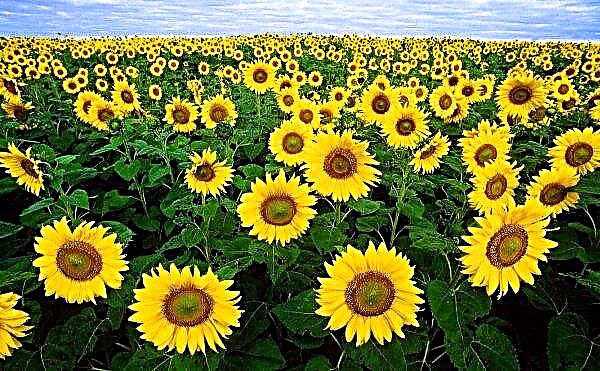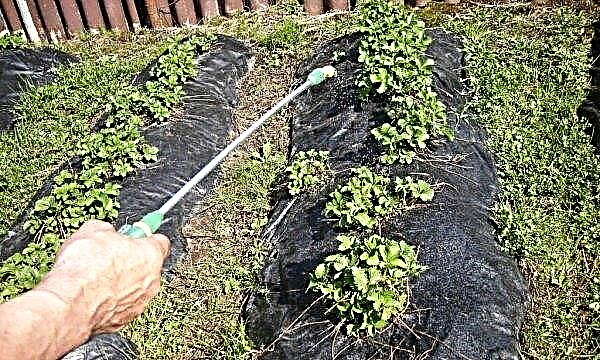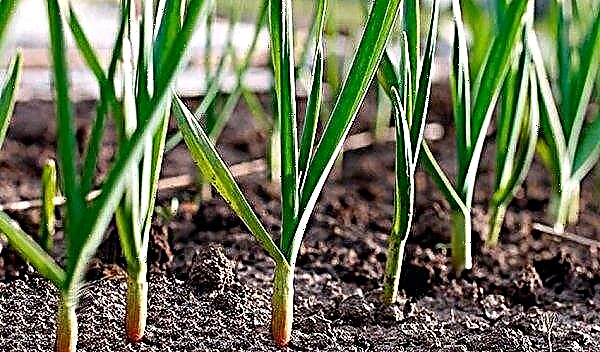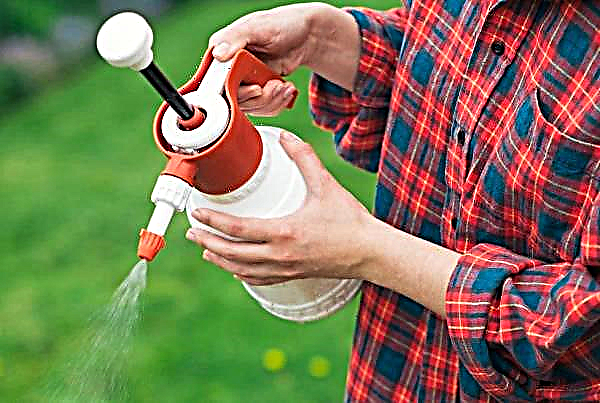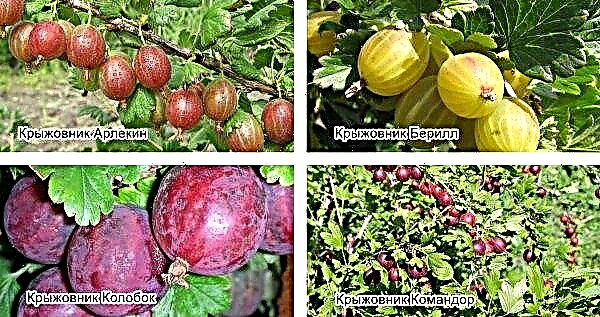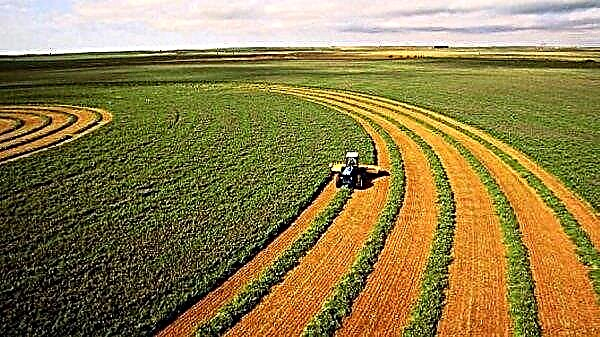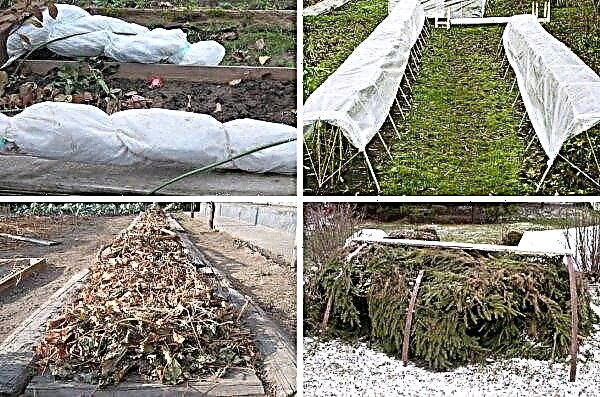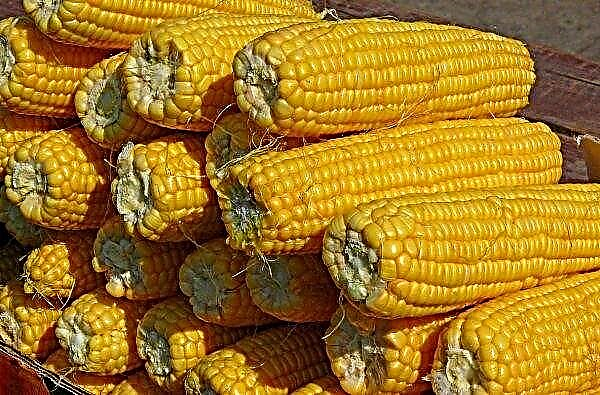Tomatoes are grown in the Urals in difficult climatic conditions, where summer weather is characterized by its unpredictability - temperature extremes, rains or prolonged drought. However, it is quite realistic to get a rich harvest of tasty and healthy vegetables if you select the appropriate tomato variety and take into account all the conditions for its cultivation.
The best varieties for greenhouses in the Urals
When choosing tomatoes, you should pay attention to several important aspects: the timing of the growing season, the type of plant growth (determinant or indeterminate), fertility and size of the fruit.
Early
Early varieties of tomatoes are considered the most suitable solution for cultivation in open soil. For a short changeable summer they manage to ripen and bring a decent harvest. Typically, the growing season of representatives of early varieties does not exceed 100 days.
Alsou
Alsou is a determinant type of tomato of early ripening, the first berries of which can be harvested 70–75 days after planting seedlings. The bush grows up to 80 cm, has a thick stem on which large, fleshy and juicy fruits with a smooth glossy surface and red color are formed in the growing phase. The crop yield coefficients are average, with 1 square. m you can collect no more than one and a half buckets. Due to its great juiciness and excellent taste, Alsou tomatoes are widely used for the preparation of fresh juices, salad preservation, fresh, as a raw material for various dishes.
Due to its great juiciness and excellent taste, Alsou tomatoes are widely used for the preparation of fresh juices, salad preservation, fresh, as a raw material for various dishes.
Apples in the snow
Apples in the snow are used both for planting in open ground, and in greenhouse shelters. Variety - early ripening, high-yielding, tolerates changes in the climate, resistant to a number of ailments and pests. Bushes are of a determinant type, with a height of not more than 60 cm. The leaves are small, dark green in color, traditional in tomato shape. Fruits are of medium size, weighing about 50–70 g, rounded, slightly flattened, bright scarlet colors.
Fruits ripen all together, in clusters of 6-7 berries in each. From the plant you can collect 20–35 tomatoes, which is 2–2.5 kg. The peel of tomatoes, although thin, is rather dense and reliably protects them from cracking. The pulp is characterized by a high juice content, dense, sweet in taste, with weakly expressed acidity. Harvested fruits can be stored under proper conditions for a long time without loss of taste and aesthetic properties.
Blizzard
Snowstorm is a hybrid of the determinant type, which can be cultivated on open soil and in greenhouse conditions. The bushes are stunted, but require mandatory garter due to the presence of a large number of fruits on the branches. During the growing season, small berries weighing 65–100 g, of a flat-round shape, purple, ripen on the plant. The pulp is watery, fleshy, has a pleasant taste with a slight acidity.
Variety yield factors are high - 8–10 kg per bush. The main advantages of the hybrid include versatility in the use of fruits, the ability to withstand ailments and pests, high yielding capacity and excellent fruit life.
Highest yielding tomatoes
Vegetable growers give great importance to the choice of tomato varieties for film shelters, which are characterized by high yields. Among them, the most successful for cultivation are a few.
The Pearl of Siberia
The pearl of Siberia is considered a relatively new tomato variety, created in 2009. It is characterized by remarkable yield parameters, the ability to withstand diseases and parasites, and undemanding care. The plant bushes are indeterminate, do not have a final growth point, can reach a height of 150-180 cm, require pinching of the top and pinching. By the degree of vegetation, the Pearl of Siberia is credited to mid-early species, the ripening of fruits in which begins in 110–115 days.
With proper care, the culture is able to please with high yields, about 8 kg per 1 sq. Km. m. Fruits - cylindrical, slightly elongated, weighing 100-130 g, bright red color. The peel of tomatoes is smooth, thin. The pulp is a dense structure that does not decompose, but at the same time is tender, soft and juicy. Tomatoes of the described variety have a pronounced sugar taste with a slight acidity. Tomatoes are well transported, can be stored for quite a long time. When stored, they do not crack, do not lose their taste and presentation.
Siberian lights
Siberian lights - a high-yielding variety of tomatoes, characterized by the versatility of the use of fruits. The plant is quite powerful, up to 180 cm high, sprawling, with unlimited shoot growth, requiring mandatory garter and stalk formation. The growing season is 110–115 days. During ripening, red cylindrical fruits are formed with small ribbing weighing up to 200 g.
Important! To obtain the highest possible yield indicators, experts recommend forming the plant into one stem.
Taste is high, on a five-point scale equal to 5. Berries have a gentle, but fairly dense pulp, excellent tomato flavor. The variety is characterized by excellent resistance to ailments, good taste of tomatoes and their aesthetic appearance, remarkable stamina and transportability.
Stellate sturgeon
Stellate sturgeon or the second name Pudovik is a mid-early variety of indeterminate type with unlimited growth rates. The plant can grow up to 2 m, therefore, requires the mandatory formation, removal of stepsons and tying. The vegetation period of the culture is 100-110 days. Ripe fruits have large, voluminous sizes, with an average weight of 400–600 g. Some specimens can grow up to 1.5 kg.
The shape of the berries is heart-shaped, slightly ribbed, asymmetric. The taste is sweet, with a slight acidity, the flesh is of medium density, very juicy. The peel has a red color, thin, but quite strong and does not lend itself to cracking.
Did you know? In the world there are about 10 thousand varieties of tomatoes. In this case, the smallest representative of the tomato family has a size of less than 2 cm in diameter. But the weight of the largest tomato is over 1.5 kg.
Having opted for the Sevryug variety, vegetable growers get a number of advantages:
- simplicity in leaving;
- high productivity;
- large fruited;
- immunity to diseases and parasites;
- great taste of tomatoes.

Undersized
Low-growing varieties of tomatoes are considered the easiest to grow and care, since they almost never require a garter or the presence of high supports.
Lelya
Lelya is a high-yielding, determinant early variety of tomatoes, the fruits of which begin to ripen 100 days after planting seedlings in the greenhouse. The plant is characterized by a low growth rate, a small foliage. The height of the bushes averages 60 cm. During flowering, small inflorescences form on the crop, which during the growing season are transformed into round fruits weighing up to 180 g with a bright red color.
Important! If you follow the rules of agricultural technology from one bush, you can collect about 5 kg of fruit.
The yield of tomatoes is 5-8 kg from one bush. The advantages of the variety are high resistance to changes in temperature indicators, resistance to ailments that affect solanaceous.
Titanic
Titanic is considered one of the best varieties cultivated in the Urals. Bushes differ in the average period of vegetation, begin to bear fruit within 120 days after planting seedlings. The plant forms very low, slightly leafy bushes 45–55 cm high. The fruits of the Titanic are small, rounded in shape, weighing 110–115 g. The tomato peel is elastic, does not crack, has a smooth, shiny surface. The pulp is dense, with a high juice content, it tastes sugary, without sourness. The described variety has several advantages, among which one can note a high yield, good adaptation to drought, and resistance to many diseases.
The pulp is dense, with a high juice content, it tastes sugary, without sourness. The described variety has several advantages, among which one can note a high yield, good adaptation to drought, and resistance to many diseases.
Wonderful lady
Another variety suitable for planting in the northern regions is the Hybrid Fairy Lady, whose growing season varies between 95–100 days. In the process of growing on the bush, fairly large fruits of a pronounced red color weighing 180–210 g are formed.
The Fair Lady belongs to the type of stunted crops, the height of which does not exceed 50 cm, which eliminates the need for garter bushes to high supports. In the process of growth, brushes containing 5–8 fruits are formed on the culture. The yield of the variety is 4.5 kg per plant when it is formed into one stem. Tomato is characterized by excellent resistance to a number of diseases, reduced lighting levels and sudden changes in weather.
Large fruited
The goal of many growers in the cultivation of the described vegetables is to obtain high yields of large, weighty fruits. In solving this problem, of course, specially created varieties of tomatoes will help, the main advantage of which are large berries weighing more than 500 g.
Berdsky
Among the large-fruited tomatoes, Berdsky is the most popular - a tall, early ripe variety, characterized by high productivity and undemanding care. The height of the bushes reaches more than one meter, which is why the plant needs to be tied up and shaped.
Important! The variety shows the best yield results when forming a plant in two stems.
Berd tomatoes have a classic round shape and a traditional red color. But berries are significantly distinguished by their dimensions - the weight of one specimen can fluctuate between 750–800 g. The fruits are juicy, with dense fleshy pulp, and have an excellent tomato flavor. Tomatoes are used for cooking appetizers, salads, sauces and ketchups, juices. 
Gina
Among low-growing plants with weighty fruits, one can note the Gin variety, whose berries ripen 100-110 days after planting material is planted. The bushes are low, up to 50 cm, but due to the presence of large tomatoes on the shoots, they need to be tied up. On one hand, 5-6 round fruits with a flattened upper part grows per season.
Tomatoes weighing about 400-500 g have a dense, crack-resistant peel, sweet, juicy and tight flesh. The main advantage of the described vegetables is its excellent shelf life, portability and long shelf life, up to two months.
King of Siberia
The King of Siberia rightfully earned its name, as it is distinguished by large, massive fruits, whose weight reaches more than 1 kg. The bushes are tall, capable of growing up to two meters, therefore they require binding. The fruits of the culture are very juicy, fleshy, have a thin skin, therefore, can not be used for long-term preservation. The color of the berries is light yellow. Due to their large size, they are not used for whole-canned preservation, but are suitable for cooking fresh juices, sauces, salad preparations.
The best determinant varieties of tomatoes for greenhouses
For growing tomatoes in northern climates, the optimal solution is a greenhouse, which creates protection from winds, frosts, heavy rains and other atmospheric phenomena. Specialists distinguish several varieties of tomatoes that bear fruit well in greenhouse shelters, while their cultivation is not particularly difficult even for beginner growers.
Bourgeois
Bourgeois is a mid-early, determinant tomato variety suitable for planting indoors. The hybrid was created by breeders from Ukraine and was registered in the State Register of Vegetable Crops of the Russian Federation relatively recently, in 2004. The vegetation period of the plant is 100-110 days. Bushes - medium height, from 80 to 130 cm, require high support.
The fruits of Bourgeois visually look very beautiful, have a round shape and a bright purple color. It tastes good, sweet, with a subtle sourness. The culture is characterized by good health, resistance to diseases, excellent resistance to bad weather conditions. Variety yield parameters are good - from 3 to 8 kg from one bush.
Openwork
Azhur tomato variety with a medium early ripening period of 100–110 days is a type of determinant plant, the height of which reaches 80–100 cm. The hybrid bears fruit with aesthetically attractive berries, weighing 240–280 g, round, slightly flattened, red in color. The taste of tomatoes is traditional, tomato. The pulp is quite juicy, fleshy, dense structure.
Openwork differs in high productivity. From each bush, subject to the basic rules of agricultural technology, you can get 4-7 kg of fruit. The culture is well tolerated by temperature changes, negative weather phenomena, resistant to ailments and moisture deficiency. Tomatoes Azhur have a universal purpose, are widely used both fresh and as raw materials for cooking and canning.
Honey Cream
Honey cream is a determinant hybrid of an early growing season - from 90 to 100 days. The bush grows to 60 cm, unbranched. The fruits are very compact, oval in shape, weighing 60–70 g. One of the key advantages of the variety is the presentation of tomatoes, the elastic structure and their excellent taste. Berries have a dense, elastic skin, juicy and hard flesh, do not crack.
Did you know? Heat treatment of tomatoes does not reduce their nutritional value. Many culinary specialists in the world prefer to use canned vegetables, in which, for example, the amount of lycopene, an antioxidant that prevents the formation of cancer cells, is tripled compared with a fresh fruit.
The described tomatoes can be successfully preserved, consumed fresh, made winter preparations or a variety of dishes. The variety is undemanding in care, characterized by high immunity to ailments, bears fruit well. From the plant you can get from 4 to 7 kg.
Features of growing tomatoes in the Urals
Growing tomatoes in the Urals is accompanied by some agrotechnical rules, compliance with which will allow you to get a rich harvest of fruits:
- Landing. Tomatoes are heat-loving plants, so they need to be planted in the soil in strictly defined terms. Seedlings are planted in open soil after the risk of return frosts disappears and when the earth warms up to a depth of 10-15 cm to + 14 ° C, approximately in late May - early June. In a greenhouse, sprouts are allowed to be planted a little earlier - in the first weeks of May.
- Watering. Regardless of the variety, tomatoes require abundant, regular moisture, the need for which is determined by the drying of the topsoil. The number of irrigations should definitely be increased in the phase of ovary formation and fruit ripening. Two weeks before harvesting, it is recommended that irrigation measures be discontinued in order to avoid cracking the fruit. It is necessary to water tomatoes in the morning, evening or in cloudy weather, using well-maintained water at ambient temperature.
- Top dressing. For the full development of the culture and the formation of fruits, it is necessary to feed it three times a season: 10 days after transplanting, during the flowering period of tomatoes and before the formation of the fruits. As fertilizers it is allowed to use organic matter - bird droppings or manure, or minerals based on potassium and phosphorus.
- Garter. Mandatory garter is required by tall and high-yielding varieties of tomatoes.The bushes are tied to special trellises or high wooden pegs that are dug into the soil by 35-40 cm.
- Shrub formation and pinching. It is recommended to form all indeterminate types of tomatoes in one or two stems, and also to make pinching regularly, every 10 days, removing the lower and lateral processes. The procedure of plant formation can significantly reduce the load on the bush and contribute to a more complete development of the fruit.
Despite the complexity of cultivating tomatoes in the Urals and in northern regions with poor climatic conditions, correctly selecting the variety and observing the main rules of agricultural technology, you can even get high stable crops of tasty, aesthetically attractive and extremely healthy aromatic fruits in the greenhouse.

